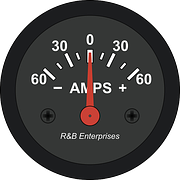What Is Google AMP, and Will You Use It?
- Donna Fisher
- September 16th, 2016

Google AMP, or Accelerated Mobile Pages, was rolled out this year. This undoubtedly changes the Search Engine Results Page, or SERP, displayed by the browser as a result of a searcher’s query. It is said that only babies and politicians like change, and both for the same reason, so is AMP a change that will cause rejoicing in the ranks of retailers? Here are some of the top changes that will occur in online sales as a result of Google AMP.

It's not the volts that will hurt you, it's the amps.
Rankings and Google AMP
Chances are, Google AMP will not affect rankings at first. As with anything online, it takes time to get, well, amped-up. However, at first, retailers will notice faster loading times for their pages. In fact, loading seems almost instant. This is a definite benefit and good news for retailers. Speed is an endless quest in computing, and having an advantage in page load times can make a major difference in conversion rates.
In addition, AMP will speed up on-site engagement. This tends to keep visitors to your site engaged for longer periods of time, which is ultimately good for ranking. It also increases the number of items purchases per visit, which is good for the bottom line.
There is also the specter of Google’s favoritism. It will probably, at some point, favor sites that use AMP. This is partly because Google is adapting to the growing use of mobile devices, so favoring AMP pages will be the natural result.

Google AMP will ultimately affect SEO.
If retailers choose to participate in AMP, they will eventually reap the benefits of improved rankings.
Using Google AMP
This all sounds pretty good, right? Here is the problem – AMP pages are not as customizable. That is expected to change, though, because eBay is getting in on the action. It has partnered with Google to test new features on its 8 million AMP pages. You’ll soon see smart buttons and have access to advanced tracking features.
Currently, Google AMP is still an open-source opportunity. The objective is to completely change mobile e-commerce. Store owners will see HTML shortened to provide quicker loading speeds, and shoppers will be able to move between products more quickly. This is always good for sales volume, and something that online store owners will want to remember when they choose images and put their product pages together.
The SERP now shows a lightning bolt beside pages that use AMP. As this becomes more common, shoppers will use these sites more often because they load faster. This is expected to increase click-through rates. As AMP sites become more common, this expected to go the way of the “mobile friendly” tags that recently disappeared from browser pages.

You know it is....
Nuts and Bolts
One of the ways that Google AMP speeds up loading is its treatment of resource sizing. You know how you have to wait for everything to load on your smartphone, and it all jumps around forever before you can even focus on one spot? Then, you think it’s finished, start reading your article, and it jumps around some more to add one more ad. Yeah, that goes away with AMP. The sizes of all images and ads are stated in the HTML. AMP checks this, first, and lays out the entire page independently from the resources. This means that the entire page only needs one HTTP request, which skips all of the style recalculations you endure with traditional browsers.

I have no idea if this is synchronous or not.
I mentioned that Google AMP is not as customizable. Part of that rigidity is due to its treatment of JavaScript. AMP can only use asynchronous scripts. This is because synchronous JavaScript can delay page rendering. AMP uses JS, but has its own features to keep it from degrading performance. Additionally, AMP sandboxes third-part JavaScript. These iframes don’t hang-up loading times and reduces the time necessary to perform style-recalcuations.
Google AMP promises lightning-fast loading and browsing on hand-held devices. Online retailers will do well to participate, and the increased traffic and engagement time will improve rankings, eventually.


